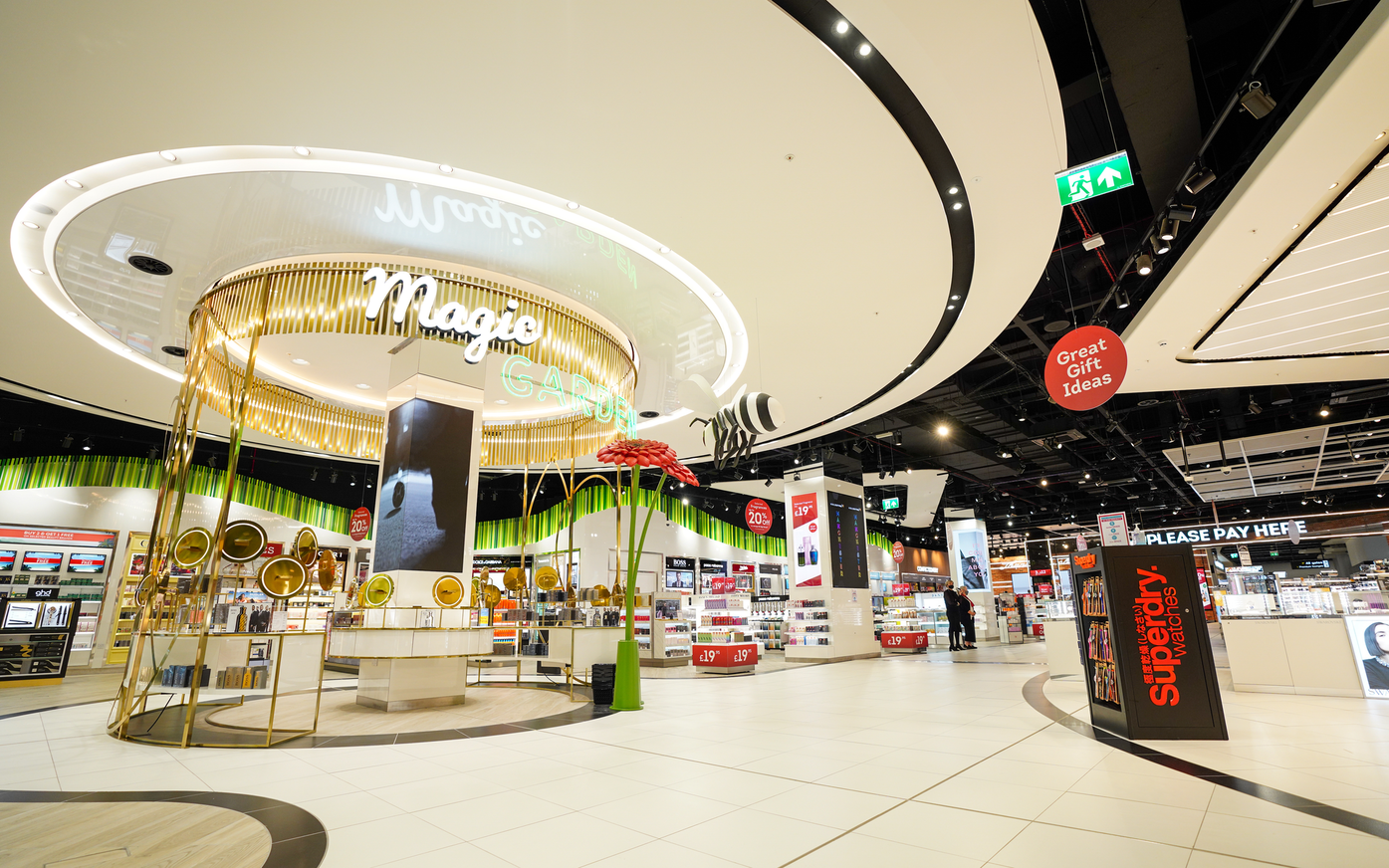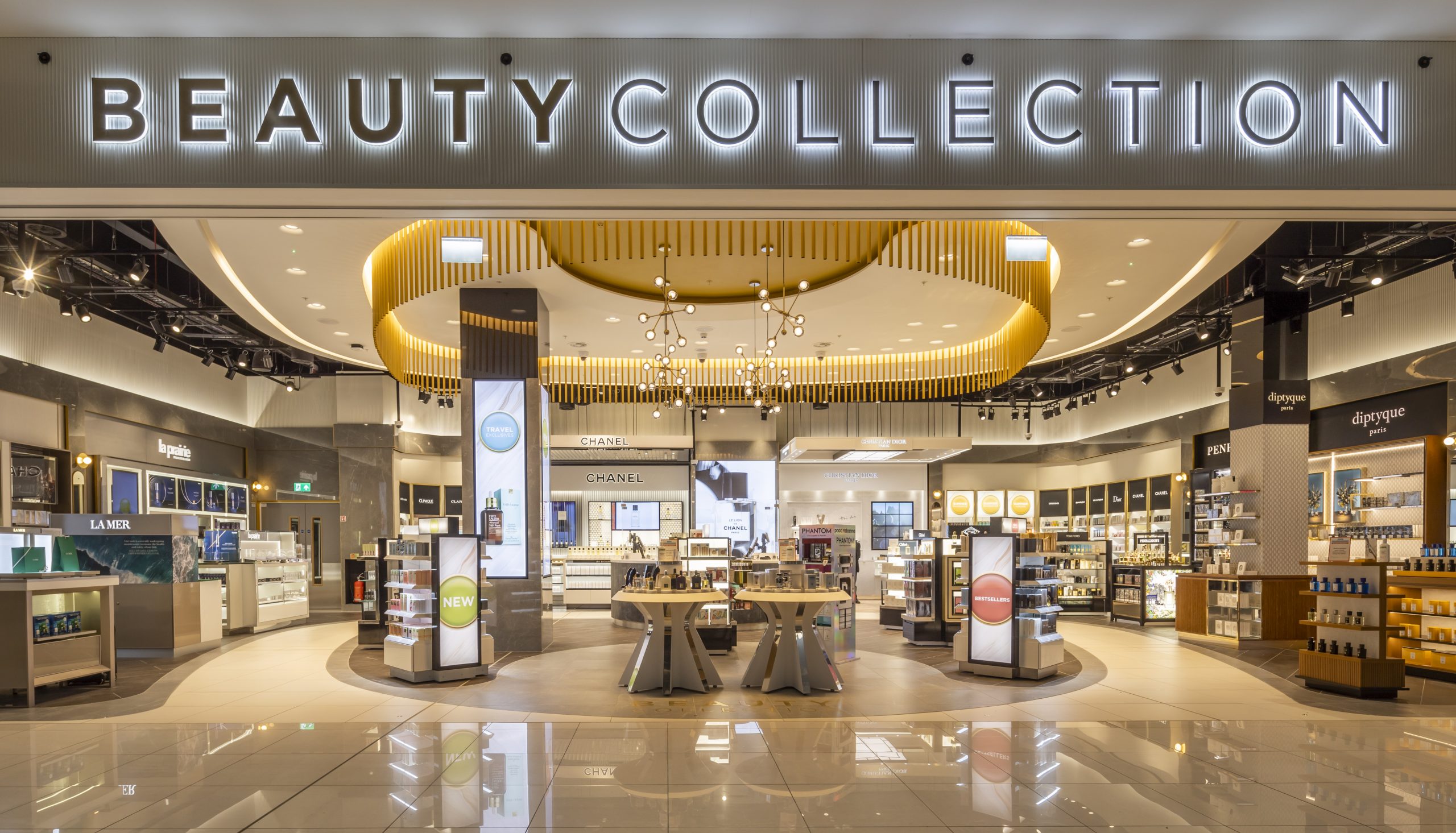| Company Details | |
|---|---|
| Company Name | JPLD |
| Address | Suite 12, Talbot House 34 Staple Gardens Winchester United Kingdom Map It |
| Name | Hannah Poore |
| Job Title | Studio Director |
| Email hidden; Javascript is required. | |
| Phone | +44(01)962 841419 |
| Role of this organisation in the project being entered | Lighting Designer |
| Category |
|
| Project Name (written how it should appear) | Manchester International Airport Terminal 2 Duty Free Stores |
| Project Address | Manchester Airport T2 Palma Ave Manchester M90 4ZY United Kingdom Map It |
| Client Name | World Duty Free Dufry |
| Designer/Architect Name | James Poore JPLD |
| Contractor Name | Paul Witham PMS Electrical |
| Project Description | The new 1,980sqm main Dufry walkthrough duty-free store at Manchester Airport aims to fully capture the spirit of its home city. The main outlet, along with the 129sqm Express Store and the 231sqm Beauty Collection store, were created by JPLD in collaboration with interior designers, The Design Solution. The ethos was to create category zones or “worlds” within the store to celebrate and reflect a cosmopolitan city that is always on the go, night and day, with dynamic lighting, vibrant modern visuals and a huge musical influence. The store features a central VIP zone, consisting of a striking central lighting installation. A circular DJ bar has an array of linear luminaires vertically mounted around the base. These give the appearance of cascading upwards and outwards across the ceiling structure. These RGBW fittings use the same video feed as the feature screens behind the bar, and the semi opaque diffused luminaires turn the video feed into an abstract light show. We have also followed a similar principle with lighting bean details around an edge detail framing the Gin area through to slender bespoke ceiling hoop details, which, like the VIP bar also take a video feed and turn it into an abstract lighting effect, ensuring complete synchronisation with any video media being played on adjacent display screens. In order to capture all the nuances complexities of this vibrant city the space was effectively divided into two areas: Night and Day. The Night zone includes the Perfumes & Cosmetics section, complete with the Fab Lab space for launches and promotions and a call to ‘Get ready to party’. It is accompanied by the Liquor area which is a tribute to Manchester’s clubbing scene with a the afore mentioned VIP room, live DJ and we sprayed out the ceiling services and services black and used black track mounted fittings to give the feeling of club-style theatrical spot lighting. In the Day section, the Fragrance area calls to mind the city’s flower market and Manchester’s iconic bee logo is featured throughout. A theatrical ‘curtain’ of shimmering metallic rods wraps the cosmetics area and dotted around we have neon (Linear LED made to simulate) soundbites where we share local colloquialisms, helping to bring the Manchester mindset to life for shoppers. Warmer lighting brings out the gold finishes and high CRI fittings with excellent colour rendering are used to bring the magic garden area to life. At the end of the store, a bank of digital screens transitions from nature scene to cityscapes, highlighting the industrial past of the area with linear lighting integrated into metal gantries over-sailing the space as a further nod to both the industrial heritage and vibrant contemporary city. The project was installed during 2020 and completed and opened July 2021 |
| Materials Used | There are a myriad of textures and surfaces throughout the store which we use to interact with the light. The whole space is a selection of various finishes to convey and dictate different themes and inspiration from the city of Manchester, culturally, historically and throughout different times of the day. As well as providing the means to see, light also plays a key role in how people experience a space. We strived to develop a thorough understanding of the client’s vision for the space and how it will be used and worked closely with the design solution to achieve this by carrying out extensive testing of materials and light sources. In some locations where light sources were to be located adjacent to a surface with a high gloss finish we would create additional baffles and glare shields as well as honing or treating the immediate surface adjacent to the luminaire to reduce reflection and glare without detracting from the materiality of the surface. Like colour and texture, light can influence the success or failure of a space irrespective of its functional properties. The effect light has on the perceived quality of a space and on the psychology of a user is not to be underestimated. |
| Sustainability | MAIN UNIT (RCP only) Tobacco (RCP only) We use, where possible and appropriate, lighting control systems to monitor and adjust light levels, dim lights to reduce their energy consumption and increase their life span and we can even look into PIR or occupancy sensors to deactivate lighting when spaces or rooms are not in use. The Environment – Further Afield: Design and specification should minimise environmental impact through the careful selection, use, installation and disposal of lamps, luminaires and supporting infrastructure. As much as possible we specify passively cooled LED light sources with a minimum efficacy of 80 lumens per watt. Unlike more traditional gas envelope lamps which turn a large percentage of their energy into heat, LED light sources turn more of their energy into light. Because of their longevity of life, LED sources cut down on costly maintenance requirements, reducing costs, project downtime and additional strains on resources. The reduction in lamp replacements also means that the environmental impact is also considerably reduced, without the need for disposal of hazardous materials and chemicals such as Mercury. However, it should be noted that the quality of LED product can differ dramatically with cheaper products being available which do not offer the same level of performance, consistency, safety, longevity and user comfort. Care should be taken on specification, selection and location which is where the knowledge and skill of the lighting designer becomes invaluable. A further consideration when designing and specifying is the procurement, where and how the fittings are manufactured and the proximity of the manufacturing plant to site and how they will be shipped. We aim to specify luminaires where the manufacturer has a circular economy approach. Many of the companies used on the project were located within the UK and within close proximity of site, where this was not possible we only use fittings from companies whose credentials and procedures have been interrogated. We undertake factory visits as much as possible to understand a suppliers manufacturing processes, procedures, and the sustainability of their operation. We challenge their full supply chain including any third-party suppliers to ensure an ethical approach and their assurances that modern slavery policies are adhered to and their products do not include the use of conflict minerals. |
| Issues Faced | Aside from the obvious issues around installing and implementing anything during the pandemic there were the added complications and security issues of getting equipment, products and installation teams into the airport into what is effectively an airside environment. There were challenging supply and procurement issues and the installation. |
| Supporting Images |





